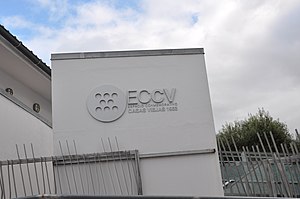Casas Viejas incident
TheCasas Viejas incident,also known as theCasas Viejas massacre,took place in 1933 in the village ofCasas Viejas,inCádiz Province,Andalusia.

Background[edit]
Theanarchist movementspread acrossSpainin the late 19th and early 20th centuries and was based on the ideas ofMikhail Bakuninand propagated byGiuseppe Fanelli.It urged oppressed workers to unite and organize against their oppressors: the state, thelatifundistalandowners, and the Church. It quickly took a hold among the long-exploited agricultural workers inAndalusia,who joined theConfederación Nacional del Trabajo(CNT) or the more radicalFederación Anarquista Ibérica(FAI) and had some limited success in improving wages and working conditions. The anarchist movement was opposed by the government of Spain, which had been a republic since April 1931.
Incident[edit]

In January 1933, workers of the CNT marched in the streets, demonstrated and believed that they were starting a revolution.[1]Somehow during the demonstrations, two guards were wounded.[2]The government's attempt to stamp out such revolutionary zeal came to a tragic head during January 11–12, 1933.[3]TheCivil GuardandAssault Guardarrived in Casas Viejas on January 11. Many of the villagers fled, but some anarchists tried to resist arrest and barricaded themselves in the home of an anarchist, Francisco Cruz Gutiérrez, who was nicknamedSeisdedos(meaning "Six fingers" ).[3]
When guards under the command of Captain Rojas arrived, they set the house on fire with the anarchists and their families still inside.[3]One anarchist,Maria Silva Cruz,survived the fire and emerged with a child, a boy, still alive.[4]Soldiers and police then arrested anyone in the village who possessed a gun, marched them to the smoking ashes of the cottage and their dead colleagues, and shot them in the back. Twenty-four people died during the incident.[3]
Legacy[edit]
The massacre led to national outrage and weakened the republican left government as the anarcho-syndicalists widely boycotted the 1933 elections. Socialists who had once supported the government began to withdraw support for the new republic.[5]
There was considerable debate about whether the orders to kill had been issued by the President of theSecond Spanish Republic,Niceto Alcalá-Zamora.That has never been proved, but it is believed to have contributed to his defeat in the following general election.[1]
References[edit]
- ^abHansen, Edward C. (2 January 1984). "The Anarchists of Casas Viejas (Book Review)".Ethnohistory.31(3): 235–236.doi:10.2307/482644.JSTOR482644.
- ^"Biografia de Maria Silva Cruz 'La Libertaria'".Portal Libertario Oaca(in Spanish). 12 March 2011.Retrieved13 August2015.
- ^abcdPreston, Paul (May 1983)."The Anarchists of Casas Viejas/Spain 1808-1975/The Spanish Civil War (Book Review)".History Today.33(5): 55–56.Retrieved13 August2015.
- ^"Silva Cruz, Maria, 1915-1936".Libcom.2 January 2008.Retrieved13 August2015.
- ^Seidman, Michael (2011).The Victorious Counterrevolution.University of Wisconsin Press. p. 18.ISBN9780299249632.
